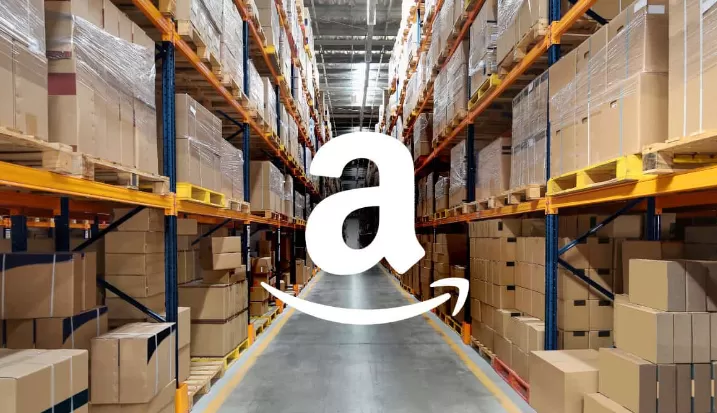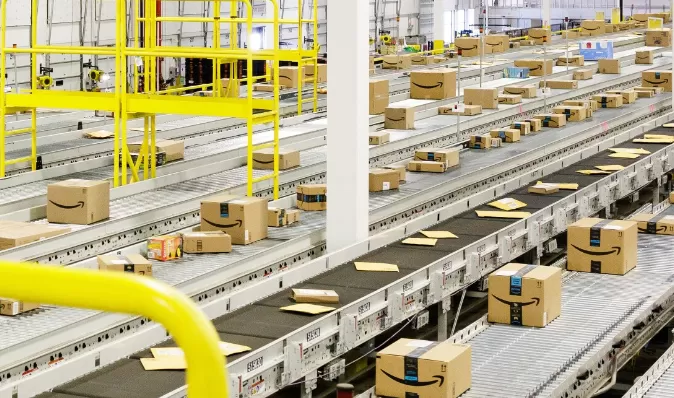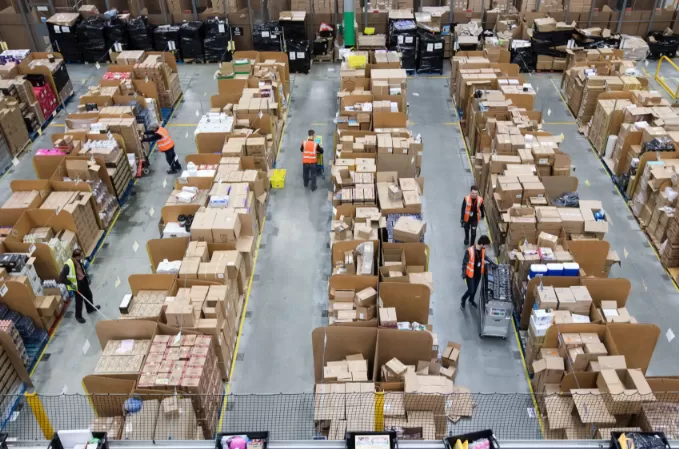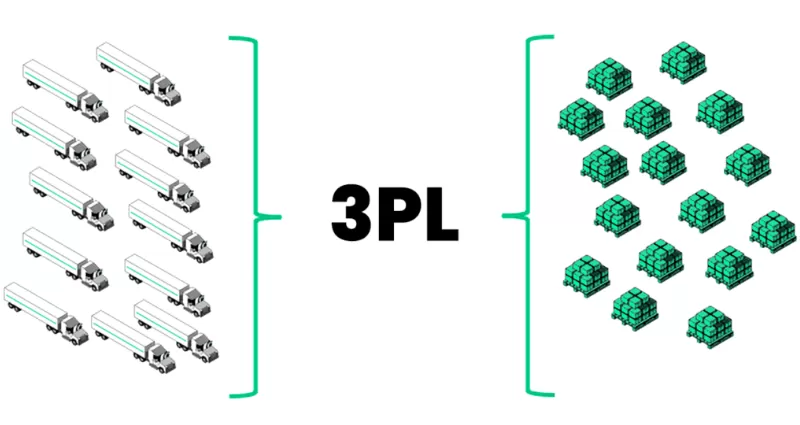Let's be real. When you started your Amazon journey, FBA (Fulfillment by Amazon) felt like a godsend. It was the ultimate "set it and forget it" logistics solution. They stored your products, picked, packed, shipped, and handled the customer service. You could focus on sourcing and marketing.
But lately, that feeling has changed. That initial relief has been replaced by a slow-burning frustration. You’re not alone. A silent chorus of successful sellers is grumbling about mysterious fee hikes, the constant anxiety of their Inventory Performance Index (IPI) score, and the sinking feeling that they’re building their house on rented land—land owned by a landlord who changes the rules without notice.
Are you ready?
Get real-time quotes for
Get Quotes
This isn't a minor inconvenience; it's the Amazon FBA Trap. The very system designed to empower you can, as you scale, become a constraint on your growth and profitability.
The good news? There's a well-trodden escape path: partnering with a specialized Third-Party Logistics (3PL) provider. This isn't about abandoning Amazon; it's about empowering yourself to succeed on Amazon and beyond. This guide isn't just a comparison. It's your strategic blueprint for breaking free, reducing costs, and future-proofing your business.
What is Amazon FBA and 3PL? Beyond the Jargon
Before we dive into the escape plan, let's level-set on the fundamentals.
Amazon FBA: This is Amazon's fulfillment service. You send your inventory from China to their warehouses. When an order comes in on Amazon.com, their system automates the entire fulfillment process. The key here is that it's an integrated, yet rigid, ecosystem. It's designed to work flawlessly—as long as you play strictly by Amazon's rules. Your convenience is traded for control.
3PL (Third-Party Logistics): A 3PL is an independent logistics partner. They operate their own warehouses (often strategically located across the country), possess their own warehouse management systems (WMS), and handle picking, packing, and shipping for you. The core differentiator is flexibility. A good 3PL is a custom-tailored suit; FBA is an off-the-rack size. A 3PL fulfills orders from anywhere—your website, eBay, Walmart, Etsy, you name it. They work for you, not a marketplace.
The Squeeze: The Real, Hidden Costs of the FBA Trap
The listed storage and fulfillment fees are just the tip of the iceberg. It's the hidden costs and strategic limitations that truly define the trap.
1. The Black Box of Ever-Increasing Fees. You've seen it. The emails from Amazon announcing "updates to our fee structure." Each one subtly increases your cost of doing business.
Long-Term Storage Fees: Got inventory sitting for over 365 days? Prepare for punishing fees that can obliterate your profit margins on those items.
Removal Order Fees: Want to get your unsold stock out of their warehouse and perhaps ship it to a different port or city to avoid those fees? You'll pay for the privilege. It's a catch-22.
Unexpected Surcharges: The introduction of fees like the "FBA Peak Holiday Surcharge" or complex customs-related fees" or "FBA Removal and Disposal Fee" means your profitability can be changed with a single policy update.
2. The Inventory Prison: IPI Scores and Capacity Limits. Your growth is literally capped by an algorithm. Your IPI score, a mysterious metric, dictates how much inventory you can send to Amazon's warehouses.
A low score (often due to slow-moving inventory, which you might be penalized for again with storage fees) means you can't restock your best-selling items. Your sales grind to a halt during peak seasons because you're physically not allowed to send in more product.
This isn't logistics; it's stress. You're forced to become an inventory liquidator instead of a growth-focused business owner.
3. The Brand Control Blackout. You've invested blood, sweat, and tears into building your brand. But in an Amazon box, it's invisible.
The Unboxing Experience: This is a prime marketing moment, and it's entirely wasted. You can't include a thank-you note, a coupon for a next purchase, or a leaflet about your brand story. You're just another generic seller in an Amazon box.
Customer Data: This is the biggest one. Who is your customer? You don't know. Amazon owns that relationship. You can't remarket to them, ask for reviews on your own site, or build a loyal community outside of the marketplace.
4. The Multi-Channel Ceiling. What happens when you want to sell on your own Shopify store? Or on Walmart? FBA becomes a liability.
Using FBA for Multi-Channel Fulfillment (MCF) is possible but often prohibitively expensive and complex. You're still tied to Amazon's rules and fees.
You're forced to manage inventory across multiple systems, or worse, hold separate stock for Amazon and other channels—a capital-intensive and inefficient nightmare.
The Escape Hatch: How a Specialized 3PL Empowers Your Business
A modern 3PL isn't just a warehouse; it's a strategic growth partner designed to solve these exact problems.
Transparent, Predictable Pricing: No more surprises. You get a clear fee schedule—storage per pallet/shelf, pick-and-pack fees, and standard shipping rates with no hidden DAP or DDP confusion. What you quote is what you pay, allowing for accurate financial forecasting.
Unlimited Scalability, Zero IPI Anxiety: Your storage space grows with you. No arbitrary limits. You hold the inventory you need to meet demand, period. Your growth is dictated by your market, not a score.
Own Your Brand Experience: This is a game-changer. Custom packaging, branded inserts, thank-you notes, and targeted upsell coupons turn a simple delivery into a powerful marketing tool that increases customer lifetime value (LTV).
True Multi-Channel Freedom: A single pool of inventory in a 3PL's warehouse can fulfill orders from every single one of your sales channels seamlessly, whether you're shipping a full container or less Your Shopify, Amazon, eBay, and wholesale orders all ship from the same place, simplifying operations and reducing total inventory carrying costs.
Mitigate Risk: Don't put all your eggs in one basket. By diversifying your fulfillment away from a single platform, you protect your business from the catastrophic impact of an unexpected Amazon account suspension.
Amazon FBA vs. 3PL: The Ultimate Comparison Table
| Feature |
Amazon FBA |
Professional 3PL (The Escape Route) |
| Core Purpose |
To serve the Amazon marketplace |
To serve YOUR business, regardless of sales channel |
| Fee Structure |
Complex, frequently changing, with hidden costs |
Transparent, predictable, and often more cost-effective at scale |
| Inventory Control |
Restricted by IPI scores and capacity limits |
Unlimited, scalable space based on your needs |
| Brand Customization |
Virtually none (standard Amazon box) |
Full control: custom packaging, inserts, marketing materials |
| Multi-Channel Support |
Cumbersome and expensive via MCF |
Native, seamless support for all sales channels |
| Customer Data |
Owned entirely by Amazon |
Accessible to you for building customer relationships |
| Risk Profile |
High (dependent on one platform's policies) |
Low (diversified and independent) |
| Ideal For |
Brand-new sellers testing the market, 100% Amazon-only businesses |
Growth-focused brands, businesses selling on multiple channels, brands that value customer relationships |
Is a 3PL Right for You? Your Decision Checklist
You don't need to be a giant corporation to benefit from a 3PL. If any of these points sound familiar, it's time to make the switch:
You sell on more than one sales channel (e.g., Amazon + your own website).
Your monthly fulfillment costs exceed $1,000.
You've felt the sting of long-term storage fees or IPI restrictions.
You care about building a recognizable brand, not just selling products.
The idea of not knowing your customers frustrates you.
You want the flexibility to negotiate rates and have a direct relationship with your logistics partner.
Making the Switch: It's simpler than you think. A professional 3PL will guide you through every step:
Onboarding: They help you set up your account and integrate your store(s).
Inventory Transfer: They coordinate the movement of your inventory from Amazon's warehouses to theirs, often leveraging discounted freight forwarding rates.
System Setup: They ensure every SKU is properly logged and stored.
Go Live: You change your shipping settings on Amazon and other channels to point to your new 3PL. They handle the rest.
Choosing the Right 3PL Partner: It's About More Than Price
Not all 3PLs are created equal. When you evaluate partners, look for:
Technology & Integration: Do they have a robust WMS that integrates seamlessly with your platforms (Amazon, Shopify, etc.)? Can you see real-time inventory and track orders?
Strategic Location: Are their warehouses centrally located in the US (e.g., in Texas, Ohio, Nevada) to provide fast, affordable shipping to most of the country?
Experience with E-commerce: Do they understand the specific needs of online sellers, like managing returns, kitting, and creating branded experiences?
Communication: Do they offer dedicated account management? You want a partner, not a ticket number.
At [Your Company Name], this is precisely what we were built for. We're not a massive, impersonal corporation. We're logistics experts dedicated to e-commerce brands like yours. Our state-of-the-art warehouses in strategic locations across the US like Los Angeles are designed for maximum efficiency, our technology platform gives you crystal-clear visibility, and our dedicated team becomes an extension of your own.
Frequently Asked Questions (FAQs)
1. Q: How complicated is the process of integrating my Amazon Seller Central account with a 3PL?
A: It's typically very straightforward. Reputable 3PLs use robust software that integrates directly with Amazon's API. This allows for automatic, real-time import of orders and automatic syncing of tracking numbers back to Amazon. From your end, it often involves authorizing the connection through Amazon's secure login—a process that takes minutes, not hours.
2. Q: If I use a 3PL, will my products lose the "Prime" badge on Amazon?
A: Not necessarily. Many 3PLs are part of Amazon's Seller Fulfilled Prime (SFP) program. This means they have proven they can meet Amazon's strict requirements for shipping speed and reliability. Your products fulfilled by an SFP-certified 3PL will still display the Prime badge. Be sure to ask any potential 3PL if they are SFP-enabled.
3. Q: What happens to my inventory if I decide to switch 3PLs in the future?
A: You own your inventory, so you can move it whenever you choose. The process involves initiating a "warehouse transfer." Your new 3PL will coordinate with your old one to have your pallets or boxes shipped to their new facility. While there are costs involved (transportation and sometimes outgoing fees from the old warehouse), a professional 3PL will make this process as smooth as possible.
4. Q: Can a 3PL handle my returns and exchanges?
A: Absolutely. This is a key service. A good 3PL will have a dedicated returns processing area. They can receive returned items, inspect them for damage, determine if they are restockable, update your inventory counts, and even handle the logistics of sending a replacement item to the customer. This saves you from having to manage returns from your home or office.
5. Q: I sell oversized or heavy products. Is a 3PL a better option than FBA?
A: Almost always, yes. FBA charges significant additional surcharges for large or heavy items. A 3PL will typically charge standard freight rates, which are almost always more economical for these types of products. Furthermore, you avoid the complex dimensional weight calculations and unexpected fees that often come with FBA for oversized goods.
6. Q: How do I handle Amazon customer service if a 3PL is doing the shipping?
A: You still manage the customer service yourself, which is a good thing—it keeps you in control of the customer relationship. The 3PL's job is to provide you with accurate and timely tracking information. If a customer has a shipping-related question, you have all the data at your fingertips to respond professionally without having to go through a third-party helpdesk.
7. Q: My business is growing fast. How does a 3PL help with international expansion?
A: This is a major advantage. While FBA has international programs, they can be complex. A strategic 3PL can act as your central North American distribution hub. You can ship a large container of inventory to them, and they can then fulfill orders to the US, Canada, and Mexico efficiently. For selling on European marketplaces, many 3PLs have partners overseas or can help you connect with a separate 3PL in the EU, simplifying your global supply chain.
8. Q: Are there any hidden fees I should look out for when evaluating a 3PL's quote?
A: Transparency is key. When getting a quote, specifically ask about fees for:
Account Setup or Onboarding: Some charge this, others don't.
Receiving: Fees for unloading and inspecting your incoming shipments.
Storage: How often is it billed (e.g., daily, monthly)? Are there different rates for pallet vs. shelf space?
Long-Term Storage: Most will charge higher rates for inventory that sits untouched for, say, 6+ months.
Returns Processing: Ask for their per-item return handling fee.
A trustworthy 3PL will provide a clear pricing sheet explaining all potential costs.
Ready to Break Free and Build a Real Business?
Stop letting a platform's policies dictate your profitability and growth. It's time to take back control of your logistics, your brand, and your customer relationships.
The first step is the easiest. Click here to get a free, no-obligation custom door-to-door quote. We'll analyze your current FBA costs and show you exactly how much you could save and how much more you could earn with a tailored 3PL strategy.
Schedule a Free Consultation with our experts to answer all your questions and build a seamless transition plan. Your escape from the FBA trap starts now.

 EN
EN
 FR
FR
 ES
ES
 JA
JA
 PT
PT
 RU
RU
 AR
AR








